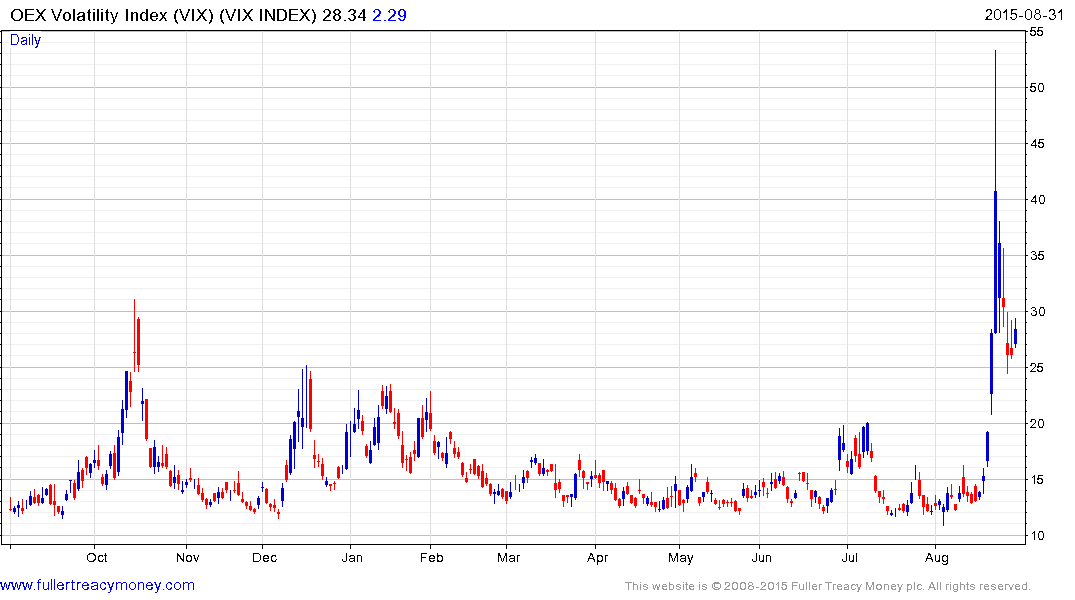30-Minute VIX Frenzy Exposes Obsession With Volatility Hedging
This article by Callie Bost for Bloomberg may be of interest to subscribers. Here is a section:
“Seeing the VIX at 50 was just chaotic,” said Michael Antonelli, an institutional equity sales trader and managing director at Robert W. Baird & Co. in Milwaukee. “It’s not like there was a headline that a bank had filed for bankruptcy or a major corporation was teetering on the brink. Why did it move that much?”
Nothing could’ve kept the Chicago Board Options Exchange Volatility Index from jumping Monday morning: global markets were buckling, China’s stocks had plunged 8 percent and companies like General Electric Co. were in free fall. And nobody’s saying the VIX broke or acted in a way that wasn’t predictable, given the array of forces that act in the markets it reflects.
A point I’ve covered previously, mostly in the audio, is the conundrum of how an automated strategy sizes positions. One can write a program in any way you want that will dictate when to buy and sell and under what circumstances. However you need to use volatility to tell the program how big a position to have.
This means when volatility is low, programs can justify having larger positions. However, when volatility rises the program has to reduce the position size because a failure to do so would take it beyond the risk parameters it can successfully operate within. This contributes to “group think” in automated strategies because as volatility increases they have to sell. One of the primary reasons we have volatility spikes is because of the self-feeding nature of these trends, This also works the other way around so that when volatility peaks, positions sizes can increase which contributes to sharp bounces.
Automated strategies contribute to short-term volatility but respond to medium-term considerations such as the normalisation of monetary policy. It is worth considering that leverage has been incredibly cheap for a long time and higher interest rates will incrementally reduce the leverage a strategy can acceptably take on. This has the potential to contribute to lower volumes among automated strategies.

Over the weekend I was chatting with a volatility trader who reported the VIX did not trade in the first half hour of last Monday’s session, suggesting the intraday high above 50 might have been higher. The VIX has pulled back from that peak but remains at an elevated level relative to the preceding tight range. A sustained move below 20 would be required to signal a return to the inert environment that preceded last week’s pullback.


